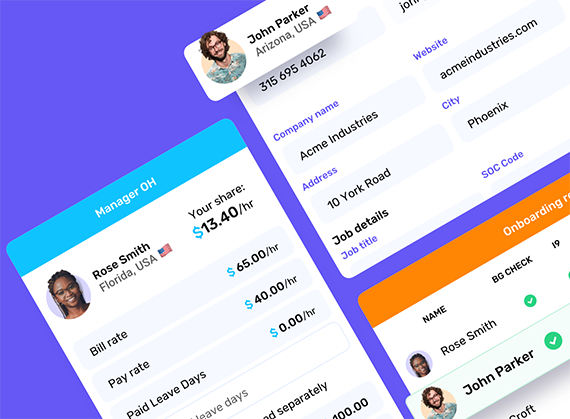The latest news might surprise you. Large companies are increasingly moving toward contract laborers. Mega tech giant Google quietly increased their contract workforce so that their temp employees outnumbered the volume of full-time hires. But that’s just one example of a growing trend that shows companies in every industry are hiring an increasing volume of contract laborers. Which model is right for your business: Traditional full-time hires or contract laborers?
Full-Time Vs. Contract—Which is Better?
Did you know that about 50% of workers in the tech field are now contractors? The predictions are that contractors will increase to 50% in every industry in the coming years. But just because this is an increasing trend, it doesn’t necessarily mean that it’s the right trend for your business.
Contract employees typically are 1099 independent contractors who must handle their own payroll taxes and benefits. Or, they may be contract W2 workers employed by an EOR or staffing agency that recruits them into the job. By contrast, full-time employees tend to have more job security, even if they work in an “at-will” hiring state. But employers are on the hook for benefits, taxes, and more.
However, before you decide that a contract worker is your best option, consider the pros and cons of this employment status.
- Pro: Reduced overhead for your business, with no benefits or taxes.
- Con: Difficulties in attracting, hiring, and retaining non-full-time employees. Given our current labor shortages, this is something to consider.
- Pro: The ability to staff up when business is experiencing a peak increase—without the risk of layoffs later on in a tumultuous market.
- Con: 1099 contractors don’t feel the loyalty at a full-time employee may exhibit toward your business. Contractors can come and go but the idea is that full-time workers may be more likely to stick around. Contractors are also likely juggling other clients in addition to you. That may make task management a little tougher than with a full-time worker.
- Pro: Contracting generally costs less for employees than other forms of hiring relationships.
- Con: The problem today, however, is that it’s harder to attract new employees. We’re also in the thick of the “great resignation,” where employees are quitting their jobs for better opportunities.
Full-time employees generally mean benefits costs, including healthcare benefits that are increasingly costly. This makes for higher overhead which for a smaller business can be a problem. However, this doesn’t mean that the model isn’t a better one for your business. Each business is unique, and you have several options when hiring staff.
Partner With an EOR
There is an alternative to full-time or contract employees; however, the EOR becomes the employer and can take much of the risk away from the employee/employer relationship. They can handle all the parts of the contracting process, from hiring, payroll, and benefits administration, to termination. It gives employers a way to reap some of the benefits of a contract workforce while decreasing the risks associated with employee management. FoxHire is an EOR that offers these benefits to our clients. Contact us to find out how we can help your business today.





